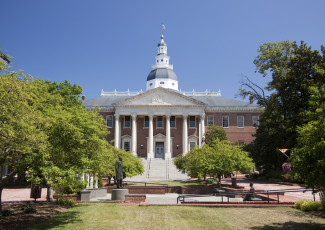State Budgets Hit Community College Funding
By Dennis Pierce
June 18, 2015
With exceptions in Arizona and Tennessee, colleges in most states, including Texas, are doing more with less and making their case to legislators.
Texas lawmakers have approved a budget that reduces funding for community colleges by 1.4 percent, leaving the state’s schools to make do with nearly $25 million less for the next two years.
Steven Johnson, vice president of public affairs for the Texas Association of Community Colleges, says the state’s budget is disappointing — but it could have been worse. “We started off facing a 4.5 percent cut from the last funding cycle in the initial version of the bill,” he noted.
The Texas Legislature approves a new state budget every two years. In the last budget cycle, the state’s community colleges received $1.8 billion. On May 29, the Texas Legislature approved a $209 billion budget that included $1.7 billion for community colleges.
State lawmakers have justified the reduction by pointing to a slight decline in community college enrollment over the past few years, as the economy has improved and fewer adults have felt the need to return to school.
But Johnson says the state’s community colleges enrolled more students than usual during the recession, without a proportional increase in state funding at the time.
“We’ve continued to do more with less,” he says.
In 2006–07, before the recession hit, Texas community colleges enrolled 575,000 students, Johnson says. By 2010–11, that number had spiked to nearly 740,000 students. This year, enrollment stood at just under 700,000 students — which is still far more than prerecession levels.
What’s more, there are signs that community college enrollment in Texas could rise again in the next few years, as the price of oil declines. In that case, the state’s community colleges would be forced to deal with budget cuts just as enrollment is picking up again.
Part of a larger trend
A few decades ago, state funding accounted for about half the revenue of Texas’ community colleges, Johnson says; today, it accounts for less than 20 percent. In this respect, Texas is part of a national trend, as the percentage of college funding that comes from state budgets is on the decline.
In 1988, public colleges and universities received 3.2 times as much in revenue from state and local governments as they did from students. Today, tuition revenue now outweighs government funding for higher education in at least 23 states.
There are some notable exceptions: In Tennessee, lawmakers have established a state-funded scholarship program to ensure that high school graduates can attend a community college free of charge — a model that some other states and the Obama administration are hoping to replicate.
On the other end of the spectrum is Arizona, where legislators zeroed out the budget allocation for the state’s two largest community college districts earlier this year.
In Texas, Johnson says, the impact of budget cuts will vary by institution, because the funding is allocated according to “contact hours” with students. “Some schools could see as much as a 10 percent reduction.”
Already, Johnson’s association is gearing up to convince state lawmakers of the value of community colleges for the next legislative session. “We like to say to our members: The first day of the next legislative session begins as soon as the gavel bangs down on the last one,” he says.
There will be 4.8 million new jobs in Texas over the next 10 years that will require some form of postsecondary training — and community colleges will play an important role in helping to fill those positions.
“We’re an enormous return on investment driving the state’s economy,” he says.









